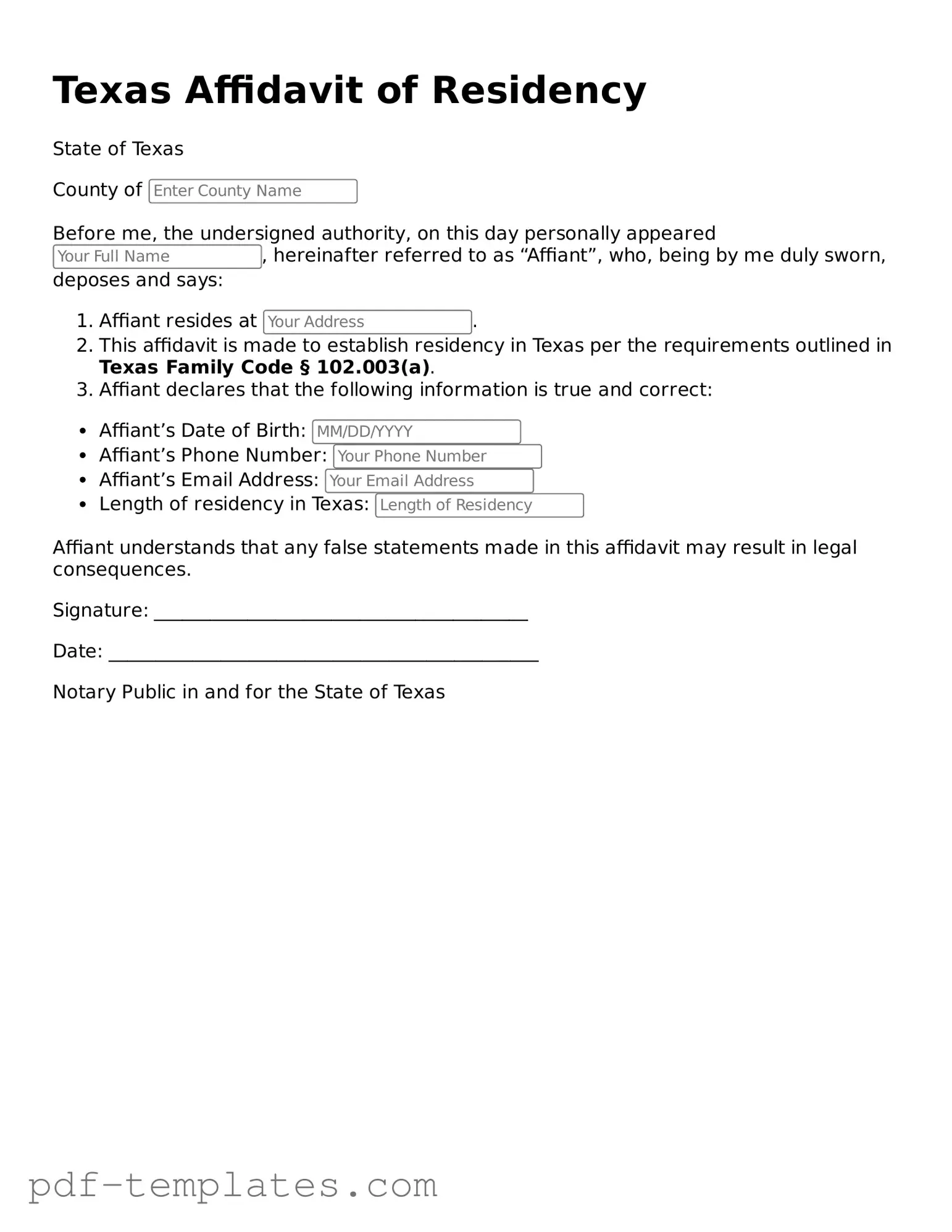The Texas Affidavit of Residency form is similar to the Affidavit of Identity. Both documents serve to confirm the identity of an individual, often for legal or administrative purposes. While the Affidavit of Residency focuses on proving where someone lives, the Affidavit of Identity is used to verify that a person is who they claim to be. This can be crucial in situations like applying for a government-issued ID or opening a bank account.
Another comparable document is the Declaration of Domicile. This declaration is used to establish a person's legal residence in a specific location. Like the Affidavit of Residency, it requires the individual to provide information about their current living situation. Both documents aim to clarify residency status, but the Declaration of Domicile is often used in more formal legal contexts, such as estate planning or tax matters.
The Voter Registration Application shares similarities with the Affidavit of Residency as well. Both documents require proof of residence to ensure that individuals are registered to vote in the correct jurisdiction. While the Voter Registration Application collects information to add someone to the voter rolls, the Affidavit of Residency may be used to validate that the information provided is accurate and truthful.
The Lease Agreement is another document that parallels the Affidavit of Residency. A Lease Agreement outlines the terms under which a tenant occupies a rental property, including the address of the residence. Both documents confirm the individual's residence, but a Lease Agreement also includes legal obligations between the landlord and tenant, whereas the Affidavit of Residency is primarily a statement of fact.
The Utility Bill serves a similar purpose in establishing residency. Utility bills often include the name of the resident and the address where services are provided. Like the Affidavit of Residency, these bills can be used as proof of residence for various applications, such as obtaining a driver's license or enrolling in school.
Understanding the importance of a Durable Power of Attorney in estate planning is fundamental for both agents and principals. This legal document not only grants decision-making authority but also guarantees that the wishes of the incapacitated individual are recognized and upheld, facilitating smoother transitions during difficult times.
The Proof of Residency form is another document that aligns with the Affidavit of Residency. This form is typically used by schools or government agencies to verify an individual's address. It may require similar information and can be submitted alongside the Affidavit of Residency to further substantiate claims about where a person lives.
The Certificate of Address Verification is also comparable. This certificate is issued by local authorities to confirm a person's address. It is often required for legal proceedings or when applying for certain licenses. Both the Certificate of Address Verification and the Affidavit of Residency aim to provide official confirmation of where an individual resides.
The Homestead Exemption Application shares similarities as well. This application is used to claim a homestead exemption on property taxes, and it requires proof of residency. Both documents involve verifying where an individual lives, but the Homestead Exemption Application has specific implications for tax benefits and property ownership.
The Driver’s License Application is another document that requires proof of residency. When applying for a driver’s license, individuals must provide evidence of their current address, which may include an Affidavit of Residency. Both documents are essential for establishing identity and residence, particularly in the context of obtaining state-issued identification.
Lastly, the School Enrollment Form is similar in that it requires proof of residency for enrollment purposes. Parents or guardians must provide documentation to confirm that the student resides within the school district. The Affidavit of Residency can be submitted as part of this documentation, ensuring that the student is eligible to attend the school based on their residential status.
